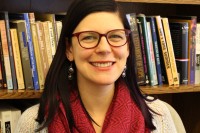Congo’s churches face rising violence
Members of dozens of churches are in hiding and Catholic institutions in particular have been attacked in the Democratic Republic of the Congo in recent months.
Amid a history of low-intensity conflicts stretching back 20 years in the predominantly Christian central African nation, it is unclear whether the violence is connected to the churches’ role in advocating for elections. President Joseph Kabila has remained in office even though his term ended in December. Many suspect him of having stolen the last election, in 2011.
“It’s a very dangerous moment right now,” said Laura E. Seay, a professor of government at Colby College, who studies the political situation in the Congo. “I’d be hesitant to say that it has nothing to do with the election and also hesitant to say it has everything to do with the election.”
Read our latest issue or browse back issues.
Congo’s Catholic bishops mediated between Kabila’s administration and opposition groups, with an accord reached on New Year’s Eve to allow a peaceful transition of power, the first in the nation’s history, with elections to be held this year. But in implementation talks, the politicians strained the pastors’ patience, Vatican news sources reported, and in late March the bishops’ conference withdrew from the negotiations.
“This lack of sincere political will did not allow for an agreement,” said Archbishop Marcel Utembi Tapa of Kisangani, the bishops’ conference president, as quoted by Catholic News Service. “The bishops’ conference cannot mediate endlessly. It will now be up to President Kabila to find quick ways to implement agreement on a national unity government that can lead the country to presidential and parliamentary elections.”
With the agreement not being fully implemented, violence has continued in a country where in 2016 conflict created more than 900,000 additional internally displaced people—more than within Syria in the same year, according to the 2017 Global Report on Internal Displacement.
In eastern and central Congo, Catholic churches, seminaries, and houses for religious orders have been attacked, several women religious have been murdered, and some priests are in hiding for fear of being killed. In the Kasaï region—where two United Nations investigators were killed in March—a Catholic monastery, convent, hospital, school, and diocesan building were burned in early April. In the same area, Congolese Mennonite leaders said that thousands of people from 30 congregations had taken refuge in forests near their homes for fear of violence.
Gatherings of the African Methodist Episcopal Church in the Congo in May were canceled because church members had fled to wooded areas to hide, reported the Christian Recorder, the newspaper of the global AME church.
The roots of the current violence go back at least as far as the 1960s, when Colonel Joseph-Désiré Mobutu became dictator after Belgium and the United States collaborated in the overthrow and assassination of the nation’s first democratically elected prime minister, Patrice Lumumba.
Mobutu took away citizenship and land rights from many people, creating grievances that continue to this day, Seay said. He also quashed civic life and tried to co-opt the churches, both the Catholic Church and the Church of Christ in Congo, known by its French abbreviation ECC. After the end of the cold war, he lost Western backing and churches pushed for a constitution and reform.
“The Catholic Church and the ECC—an umbrella group of Protestant churches—were the institutions that were independent of the state,” Seay said. “The churches in Congo were in many ways, and still are, the only reliable institutions.”
Seay is working on a book, Substituting for the State, about nongovernmental actors in eastern Congo.
“It’s important to understand that in Congo, the church provides social services on behalf of the state,” she said.
The government has contracted out health care and public education to Catholic and Protestant churches for the past 40 years. Seay has interviewed dozens of administrators at church-run schools. Many of them would prefer to move away from that work, she said, but “there’s no other institution capable of providing these services.”
In that context, some of the current attacks on churches, including the ransacking of altars, may be primarily “opportunistic,” Seay noted. Churches have valuable liturgical objects and material goods. It has been common for rebel groups to attack a health station, for example, to steal medicines.
“Part of this is not necessarily anger at the church per se, but churches are sources of money, wealth, and resources,” she said.
One reason why it is difficult to fully know the causes of the recent violence is that much of it has taken place in the central western part of the country, where there has not been much peacemaking or scholarly work, Seay noted.
The murdered UN investigators had been gathering evidence about the Kamwina Nsapu militia, named after a local chief whom government forces killed last summer, according to news reports. In April the Congolese government showed a video of the UN investigators’ murders to reporters in an effort to quell suspicion of government involvement. However, NGO workers in the country told the Guardian that the languages spoken by the armed men in the video may indicate that the national army gave the orders to shoot rather than the militia.
One of the UN investigators killed was Michael J. Sharp, who previously worked with the ECC association of Protestant denominations and its Program for Peace and Reconciliation. Part of his work with some of the 2 million people who fled to eastern Congo from Rwanda after the 1994 genocide involved talking to members of armed groups and encouraging them to demobilize and reintegrate into society.
“There are all of these elaborate schemes and they often fail, but here was something so simple,” Seay said of the program, which lost funding. “It was incredibly effective.”






